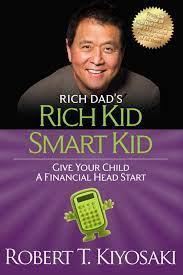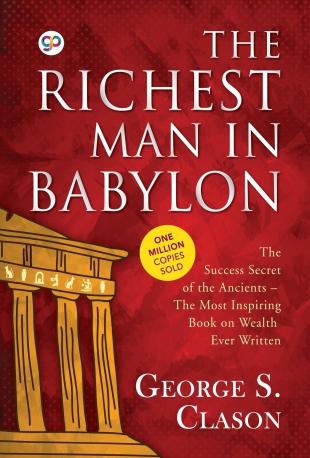THE FUTURE BILLIONAIRE
LEARN TO GROW YOUR MONEY






This achievement would not have been possible without the invaluable support and guidance of our funders and stakeholders, who recognizes the significance of financial literacy within the community

Imprint Page details:
THE FUTURE BILLIONAIRE: LEARN TO GROW YOUR MONEY
BOOK WRITTEN BY
THE FINANCIAL EMPOWERMENT INITIATIVE
Tayo Elnathan Executive Director
Email: tayo@thefei.ca
Website: www.thefei.ca
Phone: (825)333 3900
Copyright © 2024 by The Financial Empowerment Initiative
All rights reserved. No part of this publication may be reproduced, stored in a retrieval system, or transmitted in any form or by any means—electronic, mechanical, photocopy, recording, or otherwise—without prior written permission of the publisher
Published by Ladies Corner Canada Limited
Suite 3400, 10180 - 101 Street Edmonton, T5J 3S4
Printed in Canada

In an age where financial literacy has become a cornerstone for personal success and empowerment, the importance of introducing these concepts early in life cannot be overstated. It is with great enthusiasm and a deep sense of responsibility that I introduce this pioneering financial literacy book for children, a project that embodies the very essence of The Financial Empowerment Initiative's mission.
Our journey towards financial education is often fraught with complexities and challenges that many adults grapple with well into their years. Imagine, then, the transformative impact of equipping our children with the knowledge and tools to navigate the financial world confidently from a young age. This book is more than just a collection of lessons on saving, investing, and spending wisely; it is a beacon of hope for future generations to thrive in an ever-evolving economic landscape.
As Executive Director of The Financial Empowerment Initiative, I have witnessed firsthand the transformative power of financial literacy. Our work has always centered on empowering individuals through knowledge, and it is this belief in education as a powerful tool for change that



The journey towards financial empowerment begins with a single step, and for many children, this book will be that crucial first step. It represents not just an investment in their future, but a commitment to building a world where financial literacy is not just a privilege for the few, but a right for all. has driven us to support the creation of this book. Through engaging stories, practical exercises, and relatable scenarios, this book aims to instill foundational financial principles in a manner that is both accessible and engaging for young minds.
As you turn these pages with your young ones, know that you are not just teaching them about money; you are setting them on a path towards financial independence, resilience, and success. It is my hope that this book will inspire conversations, spark curiosity, and ignite a passion for learning that will serve your children well throughout their lives.
Together, let us commit to building a financially literate future, one child at a time.
With hope and determination,
Tayo Elnathan Executive Director
The Financial Empowerment Initiative






Have you ever seen something in a store you wanted to buy?
Maybe someone told you to save your money and you can buy that item someday? But your money is just not enough to buy it?


Keeping money under your bed would not make it multiply.
Do you want to know how to save money and make more money?
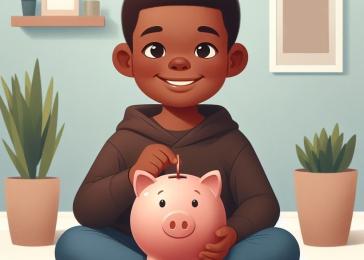
Financial literacy is learning the basics of how money works in our society, including how to earn, save and protect it. This is the use of specific skills to manage money smartly
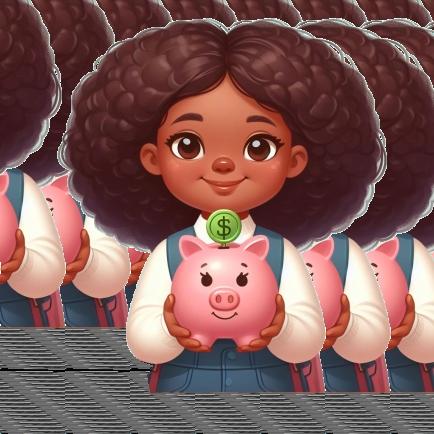
A financial institution is like a helper for your money. It is a place where you can keep your money safe, and they can also lend you money or advise you on how to manage your coins and bills.
Examples of Financial institutions are:
·Banks and Credit Unions


Need
is something you need to live and to be healthy. Examples are:
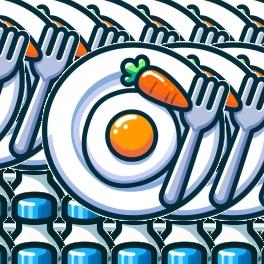


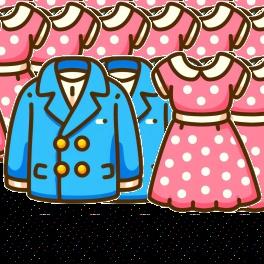
Food
Want
Shelter
Clothing
is something that is fun to have but you can live without. Examples are:



Knowing the difference between needs and wants can help you to be responsible with your money.

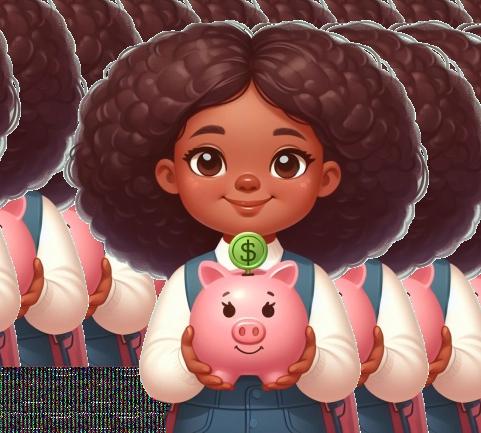



A budget is a plan for managing your money. It is an estimation of income and expenses.
Income is the money you earn or receive either as a gift or an allowance or from a Job
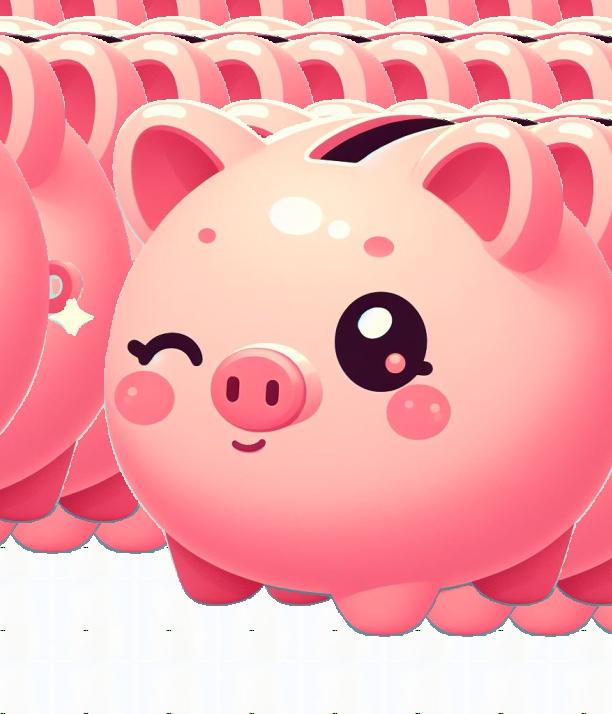
A budget is to help you live within your needs and a little extra for your most important wants.

A budget can keep you from spending money you don’t have and avoid going in to debt. Debt: is money you borrow from someone else that must be repaid

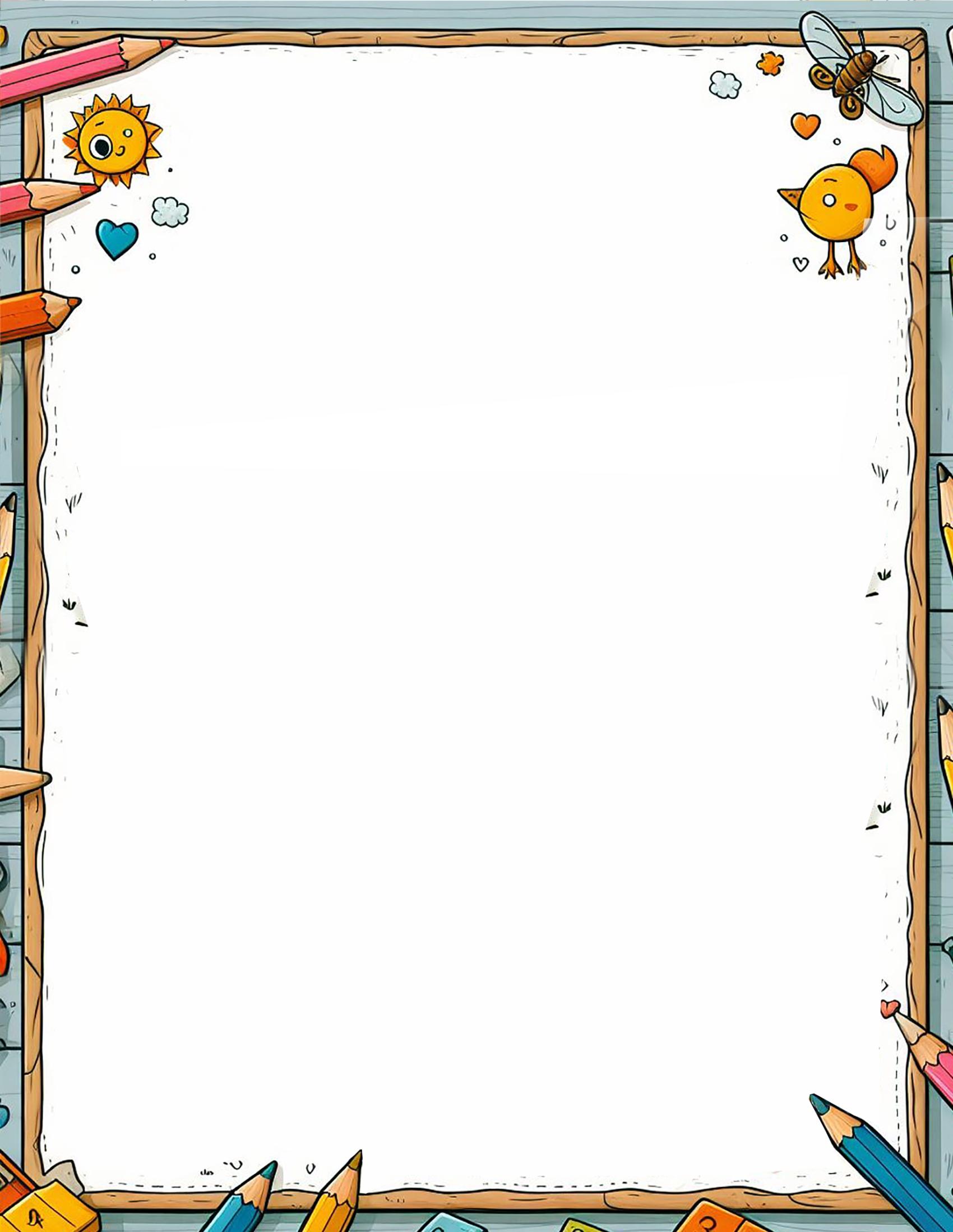















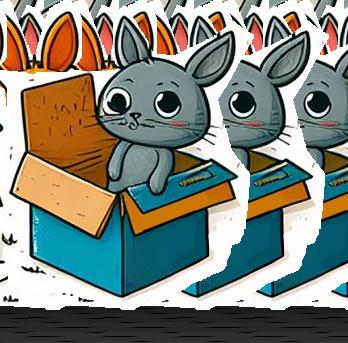


Saving is when you set money aside for the future and do not spend it right away. You could open a bank account and save it or you could keep it in your piggy bank and only spend what is within your budget. There are two ways in which you can save your money in a bank.
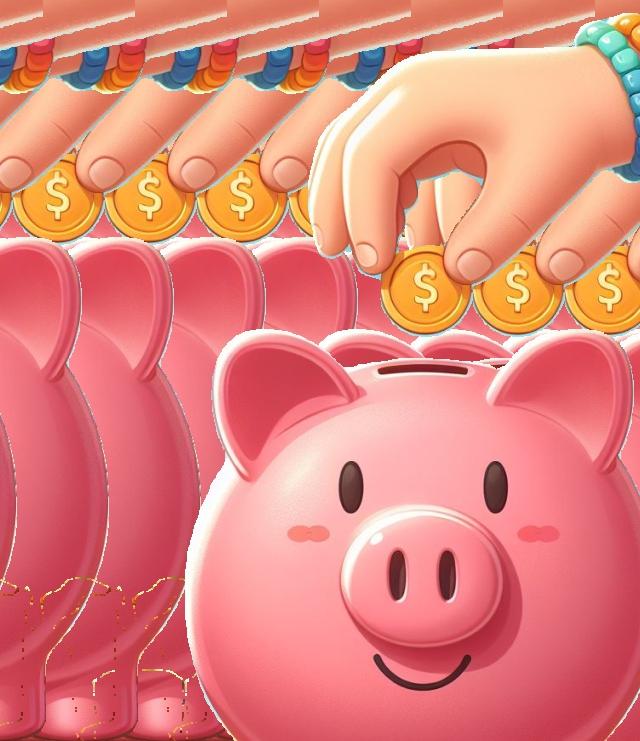
When you save your money in a bank for a while, will be added. This means interest that the bank would be adding extra money to your money over time. More money!!!


a bank, the extra money added to your money is called an Interest


Write the date
Write the name of the person or company you are paying
Write the amount in numbers

Write the amount in words
Write what the check is paying for
Sign your name



A loan is the money you borrow from someone to buy or pay for an item.
For example, you want to buy a special toy and it cost 20 CAD, and all you have saved is 15 CAD, you could borrow the extra 5 CAD from your parents. This means you have a debt of 5 CAD that you must repay.
Another example is when an adult wants to buy something big like a house or a car if they have a bank account, they could ask their bank for a loan. The bank officials would give them a loan application form to fill in the required details which could include:
- Full name - House address
- Phone number
- Reason for asking for a loan
- The date they want to pay back
- The number of days/ months/years it would take them to pay back


Once you take a loan from a bank, the bank expects you to pay the full amount you borrowed plus an extra money, which is also called an Interest.

Set your savings goals for 30 days! Write how much you are saving daily in the piggy bank $3
Example: Save $3 daily to save $90 in 30 days

Based on your monthly goals, set your savings goals for 12 months! Write how much you are saving monthly in the piggy bank
Example: Save $90 monthly to save $1080 in a year

Fill in the box if you achieved your

Have you ever noticed that most people pay for things using small plastic cards? There are two types of these cards, they are called Debit cards and Credit cards.
Debit cards are directly linked to your bank account
You pay for things with your Debit card with the money you already saved in your bank account
Credit cards are not linked to your bank account
Money in your credit card are borrowed from a credit card company e.g Visa, Mastercard etc. This is essentially a short term loan

Look at the illustration below:
Loo

ation below Nathan wants to buy a bicycle costing 300 CAD. He has 200 CAD saved and needs 100 CAD more. With a 500 CAD credit limit, he borrows 100 CAD, creating a debt with a 5% interest rate. If repaid within a month, no interest is charged, just
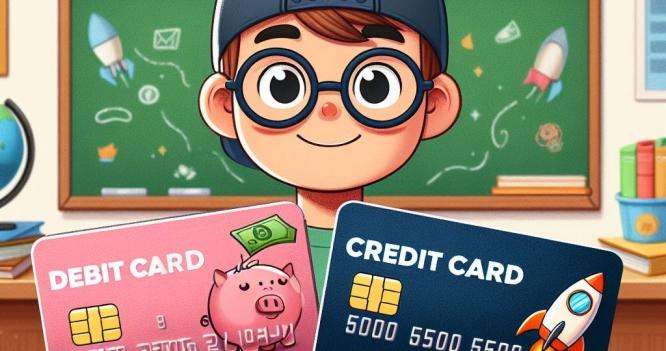

the 100 CAD loaned. If spread over 5 months, he pays 20 CAD monthly plus 5% interest, totaling 21 CAD per month.
If you were Nathan, would you wait till you can save the 100 CAD to buy the bicycle at no interest rate? Or would you use your credit card and pay it back for 5 months?
Answer the following questions
Chequing and Savings are the same thing:is a plan for managing your money
False or True
What are the types of cards you can use to pay for things?

Investing is an action you take with your money to make it grow/increase.
There are many things you could invest your money in, examples are: Stocks, bonds and real estate. Once you put your money into these examples they become your nvestments.

For example: the stock market provides a return of around 11% per year over the long term if you invest 5,000 CAD in the stock market today, then in 20 years you would have about 40,000 CAD.
Remember, you don't need a lot of money to start investing you can start by setting aside as little as 1 - 2 CAD a day and invest at the end of each month.
The earlier you start investing, the more time your money has to increase
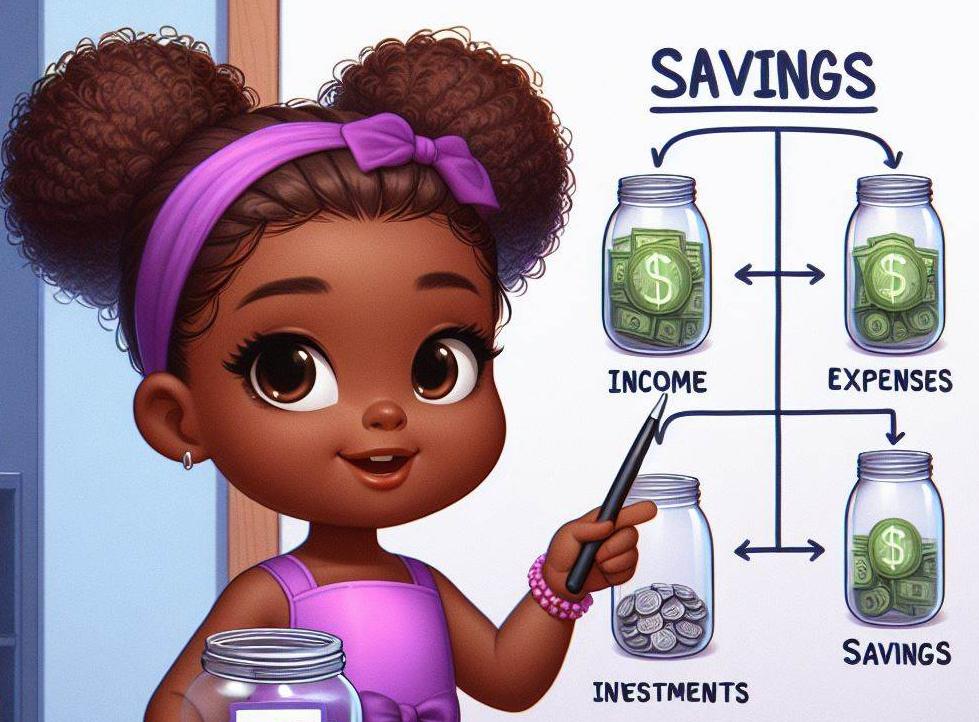
Magic - Jar
Ask an adult to help you with these items:
A clear jar (this will be our "Magic Jar")
A handful of small pebbles or marbles (these represent your money)
A set of colourful stickers (these represent the interest)



Start by putting 10 pebbles or marbles in the jar.
Every pebble or marble you put in the jar represents saving some of your allowance or gift money. Let's say this is the money saved in the first month.

At the end of the month, the bank gives you a reward for saving your money with them. This reward is what adults call "interest."
-Add one colorful sticker to the outside of the jar for every 10 pebbles inside. The stickers represent the extra money (interest) the bank adds to your savings.
Questions:
"How did you feel seeing the jar fill up with pebbles and stickers?"
"What do you think the jar would look like after a year of saving?"
Each month, add more pebbles to represent continued savings. Then, add more stickers not just for the new pebbles but also one extra sticker for each previous sticker.
-This shows that not only your original savings but also the interest it earned is growing.
After a few days of adding pebbles and stickers, observe how the number of stickers grows.
-Just like the stickers increase faster over time, in real life, your money grows faster the longer you save it in the bank because of compounding interest.


Our name is The Financial Empowerment Initiative —lovingly called thefei. We are based out of Edmonton and Calgary, but we serve clients throughout Alberta.
MISSION: To work collaboratively with the community to remove shackles of ignorance, financial and otherwise from our communities.
We know that our (Black) people want to rise and thrive We know that our people want better tomorrow for themselves and their families. A future that is secure, financially, and in all other aspects of life
Our mission at the FEI is to provide the necessary information and knowledge base to accomplish the following:
Lay the right financial foundation
Access the right resources
Tear down the old mindsets and build new thought processes
Create generational wealth
We do these through our comprehensive, targeted and culturally appropriate financial literacy sessions and tax clinic offered free of charge to the community
Annual community tax clinic in Edmonton and Calgary – aimed at supporting modest income members of the community
Multiple sessions of financial literacy –aimed at the individual for personal growth
Black Women entrepreneurs – knowledge and mentorship for the black woman business owner
Sustaining your non-profits – knowledge for the community non profit leader
Please visit us at www.thefei.ca for more information.



You can make money in 2 ways•Use your skills and passion to find and keep a JOB
To find a Job, you will need a RESUME. A resume is summary of your skills and educational achievements - as you learn new skills, you have to add them to your RESUME

Use your skills and passion to start a business – This is called Entrepreneurship




This is the act of generating a business idea, planning for it and making your idea come t life so that it can generate profit for you.
Entrepreneurship starts with having an idea.
Your idea must solve a problem.
You can either build a new equipment that solves a problem for the community.
You can either have an idea that makes a process better
Your mind must always find positive solutions to a problem.



Be curious – go out, try things, ask questions.
Have vision
Learn to think critically and creatively
Learn to manage money well.
Learn to sell
Learn to see opportunities
You must have good communications sk tell people about your ideas

You must be resilient
You must believe in your idea
How to be an Entrepreneur
Find a notebook - Ask yourself, these questions – Write out the answers in your book


What am I good at?
What do I enjoy doing?
Do I want to build something? What problems can my skills and talent solve?
Do I want to sell what something that already exists?
Who do I want to sell too?
What are the benefits of my pl
How much will I sell the item?
Do I need any raw materials to mak my items
Where would I buy them from

How would I sell or market it t people?
How do I collect my money?
Where do I save my money?


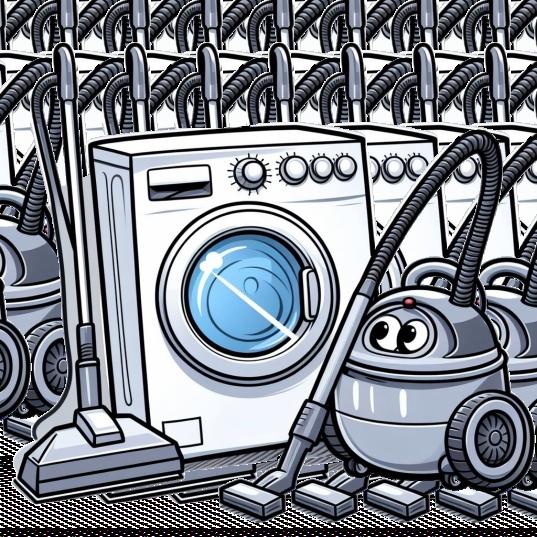
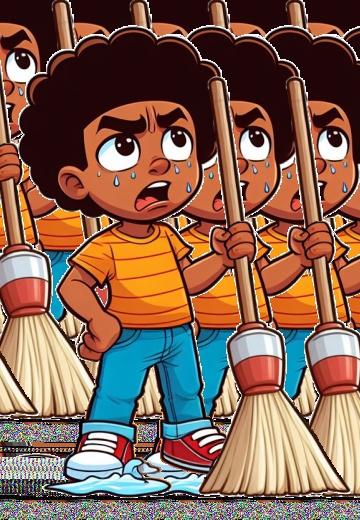


If you can answer these questions in your book, you have created your first Business Plan... . Congratulations!!!!


Judah's mom makes him cleans his room every Saturday. Judah does not like Cleaning. He hates to vacuum and he hates to laundry
So he comes up with an idea that solves his problem. He decides to


build a room cleaning robot….
He creates a vision for his robot. His robot will be able to
Fold laundry
Vacuum
Play music
He spends time researching and building and finally he comes up with a prototype to show his parents and friends.
1. Then he begins to test the robot, to see if it actually works.
2.He notices some kinks, and he writes and rewrites the codes….
3.He tests his robot again….
If you need ideas of what you might want to sell as an entrepreneur, here are some –remember, your idea must solve a problem for some people
1. Develop an APP
2. Robotics
3. Babysitting
4.He notices something is still wrong with the way it vacuums.
5.He goes back to tweak and rebuild.
6.Finally, it works.
Judah saw a great opportunity and began to market the robot to his friends and made oodles of money!

4. Car washing
5. Graphic design
6. Painting and arts
7. Cleaning services
Remember whatever you do requires
1. Hard work
2. Belief in yourself
3. Focus on the goal
